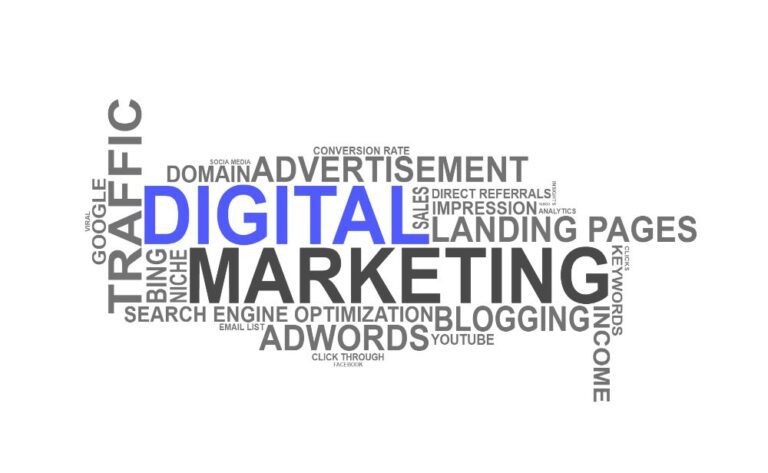6 Digital Marketing Trends for 2023 and How to Adopt Them
The reasons why companies use marketing campaigns remain the same, even though the means by which they do so have evolved over the years. Every company strives to connect with its ideal customers just when those customers require their products or services.
Because of the continuous emergence of new technologies, the means by which businesses must connect with their target demographics must develop in order to keep pace with the competition.
Here are 6 digital marketing trends to consider for your 2019 digital marketing strategy.
Digital Marketing Trend #1: Omnichannel Marketing
The modern consumer conducts research, makes comparisons, makes purchases from, and interacts with businesses via a variety of different channels. These can be either online or offline channels, with the latter category including not just your own website but also Amazon, eBay, Facebook, and other similar platforms as well.
What exactly does “omnichannel marketing” refer to?
Omnichannel marketing is a sort of marketing that ensures a consistent user experience and encourages the consumer to engage with your business at every touchpoint across numerous channels. This style of marketing connects the dots between multiple channels in order to accomplish these goals.
The most recent research study conducted by BigCommerce(Open Link in new window) provides an in-depth look into how consumers of different generations approach omnichannel shopping(Open Link in new window), as well as what they anticipate from businesses at each stage of the buyer experience.
The findings of the study provide some extremely intriguing takeaways:
• These days, nobody shops solely through a single medium;
• Younger generations use all kinds of media to purchase products, but they also know no other way to shop;
• Younger generations shop in physical stores considerably less (only 9.6% of Gen Z reports buying items in a physical store), they are more likely to return products, and they value the ease and speed of the shopping experience;
• Younger generations shop in physical stores considerably less (only 9.6% of Gen Z reports buying items in a physical store);
• Younger generations
Because an omnichannel presence is starting to become the standard for shopping experiences, you should make sure your product is placed everywhere it may be. It’s not only about making direct sales; having a widespread presence builds brand recognition, which is another reliable strategy for maximizing return on investment over the long term. The following are the most obvious channels that your brand has to be present in:
• Facebook and Instagram, including advertisements for Facebook and Instagram
• Amazon (Remember: Amazon is also a search and product discovery channel, so you need to be in its algorithm)
• Google’s Shopping Actions is a multi-channel platform that ensures your customers have a consistent experience regardless of the media they use to do a search. This link will open in a new window. For instance, they can conduct a search using their voice, use voice commands to add items to their shopping basket, and complete the transaction from their desktop.
Aside from that, establishing a constant presence for the brand across a number of different platforms is an efficient method to increase consumers’ knowledge with the brand and to more consistently engage them across a variety of channels. ContentCal is a reliable tool that can assist you in achieving this objective in a manner that is both more efficient and less costly. The link will open in a new window.
You are able to set up a multi-step delegation and moderation process with ContentCal, as well as cross-post your social media updates across multiple channels. Encourage your entire team to add unique social media updates to ContentCal’s “Pinboard,” and have one (or more) moderators who will ensure the updates align with the brand’s voice and will then schedule them easily via drag-and-drop functionality.
The use of artificial intelligence and machine learning is the second trend in digital marketing.
What exactly is meant by the term “artificial intelligence” (AI)?
The subfield of computer science known as artificial intelligence (AI) focuses on the process of teaching computers to think and behave in ways analogous to those of humans.
In most cases, artificial intelligence algorithms are driven by machine learning. Machine learning is teaching a computer to do things that a human brain is not capable of doing, such as complicated data mining and making future predictions based on existing patterns. Artificial intelligence, on the other hand, is primarily focused on teaching machines how to replace humans.
Machine learning and artificial intelligence are two concepts that are frequently used synonymously with one another.
To make it easier to conceptualize, the following are a few instances of AI-driven technology that are currently present in our digital lives:
• The user is able to construct a whole email with artificial intelligence using Gmail’s Smart Compose and Smart Reply features. These functions are based on the user’s previous emails and typing habits.
• LinkedIn will make introductions to people who can offer value to your professional life based on the people you’ve worked with in the past.
• On behalf of your company, Facebook Messenger will deliver pre-written responses to the people who follow your page on Facebook.
The two most well-known companies to pioneer the use of AI in marketing are:
• Amazon is using artificial intelligence to study the decisions of each individual shopper and offer things to them that they weren’t even aware they wanted or needed.
• Netflix is utilizing AI for more than just making content recommendations. Additionally, Netflix is quite successful in applying AI to product development. They have evaluated viewer data collected over many years in order to develop profitable products of their own, like as the critically acclaimed show “House of Cards.” Simply put, owing to AI, Netflix is aware of what customers desire before they even realize it themselves.
Customers have a tendency to rely more and more on AI-powered algorithms for product discovery as each new generation of consumers comes along. According to research conducted by BigCommerce (Open Link in a new window), customers in the age range of 18 to 23 place a significant amount of importance on receiving AI-powered personalized product recommendations, viewing advertisements on social media, and actively engaging with a brand’s social channels.
To reap the benefits of machine learning right now, one of the most effective strategies is to find a reliable business partner who already possesses the necessary technology and has it operational in the background.
The most effective application of machine learning to date has been in the field of sentiment analysis powered by AI. The sentiment analysis tools available today can not only identify mentions that require your team’s attention but also provide assistance in the appropriate management of these comments.
An excellent illustration of this forward-thinking approach to sentiment analysis is provided by Sentione (Open Link in a New Window). It does this by implementing machine learning and natural language processing methods, which opens the link in a new window, to extract the internet context around your brand. After then, Sentione’s AI-powered self-learning agent (Open Link in new window) makes recommendations for subsequent action based on the data it has collected and the interactions it has had with customers in the past.
Voice search is the third emerging trend in digital marketing.
The emergence and rapid adoption of smart speakers (also known as digital home assistants), such as the Amazon Echo, the Google Dot, and Apple’s Homepod, is causing new searching behavior, specifically voice search. This new behavior is being driven by smart speakers like the Amazon Echo, the Google Dot, and Apple’s Homepod (also known as conversational search).
The use of these clever technologies makes searching a lot less difficult and completely hands-free. “Alexa, can you tell me when the next showing of The Avengers movie is?” It’s as simple as that.
The adoption rate of this technology has been rapidly increasing over time as it gets more user-friendly and dependable, as evidenced by the fact that in 2016, an average of roughly 40% of adults were using voice search on a daily basis. (Open Link in new window) Domino’s has established themselves as the industry leader by implementing voice search as a means to boost sales (Open Link in new window).
Online search queries have become lengthier and more specialized as a result of improvements in speech recognition software and mobile search capabilities. However, this is merely the tip of the iceberg when it comes to addressing long-tail search queries. For a very long time now, Google has been working on adapting its search algorithm to better support natural language queries. We have only had a few hints about what Google is working on, and they have come in the form of the Hummingbird upgrade and the Rankbrain announcement (Open Link in new window).
Because Google now understands purpose and context considerably better than it used to, keyword matching is no longer useful to the company. This improvement is a result of machine learning. The procedure of researching keywords is now more difficult than in the past (Open Link in new window). There are currently a few clever programs available on the market that provide a significantly more advanced strategy for conducting keyword research. The following are the two instruments that I mentioned earlier:
You are able to optimize content to match Google’s (and its users’) expectations (i.e. intent) by using TextOptimizer (Open Link in new window), which does an analysis of search snippets for each query and makes suggestions for relevant terms, topics, and categories. TextOptimizer is available as a web-based version, as well as an extension for Google Chrome (Open Link in new window) and a plugin for the WordPress content management system (Open Link in new window).
Serpstat (Open Link in new window) examines the search engine results pages provided by Google, locates URLs that overlap, and organizes your keyword lists based on their level of relevance. enabling you to uncover the concepts that are behind your queries while simultaneously optimizing for groups of keywords that are related:
Both packages are examples of the latest generation of search engine optimization (SEO) software, which enables users to analyze and optimize beyond simple keyword matching, to better optimize their content, and to be ready for any type of search behavior, whether it be voice commands or typed words.
The fourth emerging trend in digital marketing is personalized marketing.
What exactly does “personalized marketing” refer to?
To provide an individualized user experience(Open Link in new window) that is targeted toward each unique user of your website or subscriber to your email list is an example of personalized marketing(Open Link in new window).
Nearly 96% of consumers believe, as reported by Evergage (Open Link in a new window), that personalized marketing encourages the development of a relationship with the business. According to research conducted by Forrester (Open Link in a new window), approximately eighty percent of customers have either suggested a product to a friend or paid more for it because of a personalized service or experience.
Despite what you may have heard, growing worries about privacy and security are not likely to put an end to targeted marketing. The modern customer has come to demand a tailored experience and is willing to part with their personal data in exchange for such an encounter.
BigCommerce has observed (Open Link in new window) that younger generations of consumers are more willing to share their personal information in exchange for incentives and a more personalized shopping experience.
Many popular websites, including Netflix, Amazon, and Pinterest, as well as Google and Facebook, all employ personalized marketing strategies. They look at your search history, take note of what you liked and didn’t like, and then make suggestions for things that are comparable to ones you weren’t even planning to purchase.
The fifth trend in digital marketing is video marketing, followed by influencer marketing.
Even while YouTube is the first platform that comes to most people’s minds, video marketing can actually be implemented across a wide variety of social media sites, including Facebook, LinkedIn(Open Link in new window), Instagram stories, and Snapchat.
People are more inclined to share your movies on other social media sites if they are interesting, can be seen in a short amount of time, and are clear and succinct.
It is possible for this to have a more significant impact if an influencer who is already well-established on the platform is given the opportunity to participate. These influential people in related fields can speed up the process of getting the word out about your products or content.
The sixth emerging trend in digital marketing is visual search.
The capacity of people to search for things are advancing along with the proliferation of mobile devices like smartphones that provide Internet access on the go.
Voice search does away with the requirement to type your keywords into a search box and eliminates the necessity for a screen to engage with the results; nevertheless, visual search reimagines the concept of the term itself. You don’t need words; all you need to do is present a photo in order to search.
It is now feasible to use your smartphone’s camera as a search tool thanks to apps such as Google Lens. A single image can be used to search for anything from famous landmarks to works of art, novels, and even business cards. A photo of either a book or an article of clothing can be used to locate information about the product’s pricing, reviews, and sellers.
The following are the most effective strategies to maximize the use of visual search:
• Across all of your social media channels, promote visually appealing content of a high quality (Open Link in a New Window).
• Ensure that your product pages contain a wide selection of high-quality photographs;
• Ensure that those images are properly optimized for search engines;
• Implement Product schema for images. This will add an ecommerce context to your photographs right there within Google Image search.
In the year 2023, customers’ methods for searching for information and shopping have progressed to include personalization powered by AI, improved segmentation, and the creation of new sorts of content, gradually incorporating an increasing number of newly developed technologies.
If you are aware of how to put these new technology improvements to work for you, the marketing industry stands to benefit tremendously from the advent of these innovations. Because there are so many other firms in your field that you compete against, the sooner you learn how to implement new strategies (such as voice and visual search, in addition to personalization and influencer marketing), the more competitive your company will become.
When it comes to video and personalized marketing, it is vital to review your present approach and modify it so that it better meets the requirements of your audience. In order to ensure that your company remains one step ahead of its competitors, it is imperative that you remain current on any new developments notwithstanding the strategy that you choose to implement moving forward.







